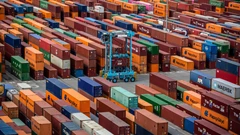Chinese Solar Makers Face New Tariffs After US Says They’re Dodging Duties
(Bloomberg) -- A US government probe has concluded some manufacturers in Asia are illegally bypassing tariffs on Chinese solar equipment, exposing them to duties that threaten to hike the cost of renewable power and slow the development of clean energy.
Some solar cells and modules exported from Southeast Asia could now face tariffs as high as 254% in June 2024, after the Commerce Department determined that companies operating in Cambodia, Malaysia, Thailand and Vietnam are avoiding the longstanding duties.
The US singled out five companies that are either Chinese or linked to China as circumventing tariffs: BYD (H.K.) Co. Ltd. and New East Solar (Cambodia) Co. Ltd. in Cambodia; Canadian Solar Inc. in Thailand; and, in Vietnam, Trina Solar Science & Technology and Vina Solar Technology Co., a unit of Longi Green Energy Technology Co.
A senior Commerce official who briefed reporters on the findings said the investigation — which included site visits and factory audits — is a signal the Biden-Harris administration is taking trade enforcement seriously as well as a warning to other companies engaging in similar circumvention schemes.
Ultimately, the ruling should bolster US solar manufacturers, which are already expanding domestic production capacity with incentives from last year’s climate law. Many US power companies had started diversifying their supply chains ahead of the decision, to minimize potential exposure to new tariffs and a US forced labor law aimed at products tied to China’s Xinjiang region.
The Commerce Department’s decision could also inflame tensions between Washington and Beijing, even as the two superpowers look for ways to improve relations.
Shares of Canadian Solar were up 0.2% as of 10:46 a.m. in New York after paring earlier losses of as much as 1.6%.
In the short term, the ruling could accelerate US purchases of affected solar equipment before the expanded duties go into force next year, as renewable power developers look to stockpile tariff-free gear. Expanded duties would normally apply already, but President Joe Biden issued a proclamation in 2022 providing a two-year grace period designed to sustain US solar deployments while domestic manufacturing ramps up and developers shuffle suppliers.

Some US lobbyists tried unsuccessfully to push the Commerce Department to go further and crack down on solar imports that contain Chinese-made polysilicon and ingots, early precursors in the panel-making process. But the agency largely hewed to the preliminary determination it issued last December.
At least three companies won’t be hit with expanded tariffs — Hanwha Q Cells Malaysia Sdn. Bhd., Jinko Solar Technology Sdn. Bhd., and Boviet Solar Technology Co. Ltd. — after the Department concluded they weren’t trying to evade the duties.
The US solar industry is heavily reliant on imports from Southeast Asia, with the affected countries supplying roughly 75% of modules to the US.
Under the ruling, all other solar manufacturers in the four countries will be hit with new duties unless they certify their exports don’t evade the tariffs. For instance, modules that are made using Chinese wafers will be spared duties as long as some key inputs were produced outside the country. Most companies facing new duties would see combined rates under 100%.
Even so, US renewable developers were bracing for higher costs from using imports subject to the duties or tariff-free supplies that can command a premium.
“The circumvention finding will increase the overall costs of virtually all US-bound solar products because it will constrain supply at a time when the demand for solar is skyrocketing,” Trina Solar (US) Inc. President Steven Zhu said in an emailed statement. The ruling “makes it harder, not easier, to establish a US supply chain and a homegrown American workforce.”
Still, there should be sufficient supply of tariff-free goods to meet domestic solar demand between 2024 and 2030, said BloombergNEF analyst Pol Lezcano.
The investigation, which spanned 17 months, was triggered in response to a petition from California-based manufacturer Auxin Solar Inc.
Auxin Chief Executive Officer Mamun Rashid cheered the decision even as he called on the administration to impose duties immediately.
“For years the Chinese have flouted the US trade remedy laws, and today, with Commerce’s affirmative country-wide circumvention decisions on Cambodia, Malaysia, Thailand and Vietnam, we’ve successfully closed these loopholes,” Rashid said in an emailed statement. “Because ample solar module supply exists from domestic manufacturers and non-circumventing imports, President Biden should immediately end his unlawful tariff moratorium policy and not continue to give Chinese trade cheats a continued free pass to the US market.”
The circumvention probe was a quasi-judicial process, largely dictated by nearly century-old US trade law.
The Biden administration had little “choice to be protectionist or not,” said James Lucier, managing director at research group Capital Alpha Partners. Biden’s two-year safe harbor was designed to address that inevitability, he said, adding: “There was no viable way to have Commerce find there was no dumping going on.”
Supporters of the probe said the US needed to more vigorously enforce measures first imposed in 2011 to offset unfair pricing and subsidies by China that have disadvantaged American rivals. Opponents argued Commerce was ignoring the complexity of solar cell production in Asia by treating it as a insignificant processing step.
“We have invested hundreds of millions of dollars in cell and module production in Thailand and Vietnam and most recently another large-scale wafer production facility in Vietnam,” Trina’s Zhu said. “Characterizing this production as only minor processing is not an accurate assessment of the facts and against common sense.”
(Updates with shares in seventh paragraph and comment from Trina Solar president in 14th paragraph.)
©2023 Bloomberg L.P.
KEEPING THE ENERGY INDUSTRY CONNECTED
Subscribe to our newsletter and get the best of Energy Connects directly to your inbox each week.
By subscribing, you agree to the processing of your personal data by dmg events as described in the Privacy Policy.
More renewables news

GB Energy Faces New Doubts as UK Declines to Affirm Future Funds
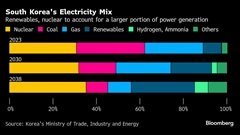
Korea Cancels Planned Reactor After Impeaching Pro-Nuke Leader
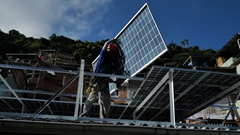
Brazil’s Net-Zero Transition Will Cost $6 Trillion by 2050, BNEF Says
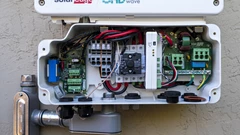
SolarEdge Climbs 40% as Revenue Beat Prompts Short Covering

EU to Set Aside Funds to Protect Undersea Cables from Sabotage
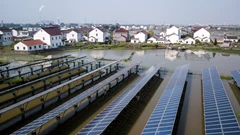
China Revamps Power Market Rules In Challenge to Renewables Boom

KKR increases stake in Enilive with additional €587.5 million investment
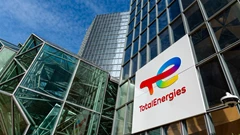
TotalEnergies and Air Liquide partner to develop green hydrogen projects in the Netherlands
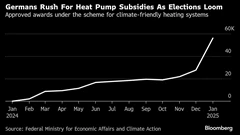
Germany Set to Scale Down Climate Ambitions
